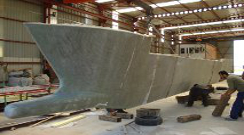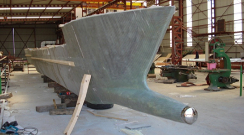Low fuel consumption.



Who knows not the physical boatbuilding rule: length runs ... Two long, arrowhead-hulls together have a lower water resistance than a bulky, boat hulls of the same displacement. This brings the first part of the fuel savings. The second point is, the weight of a Cat-Yacht is about the half weight of a conventional Yacht same size. Therefore we need a smaller by about 50% input power, so smaller engines. We have chosen for our yachts, the most economical marine diesel Volvo-Marine Diesel. In addition, two different bow shapes are used, depending on the area in which the yacht operates mainly: Rough Sea, for example. Atlantic, North Sea and Baltic Sea. Or in districts where mostly calm water (to moderate seas) predominates. These are the Balearic Islands, the wind poorest area in the Mediterranean. Even in parts of central and eastern Mediterranean, the Caribbean and parts of the Red Sea is frequently encountered smooth water.

Explanatory notes on the diagram: The lines of resistance round clamping trump (dashed line), chine hull (solid line) are initially close together. For higher power ratings, the advantages lie with the hard-chine design, so we decided on our CAT-hulls for this design. The red lines show the required machine-drive power of the Yacht-type 15.5 / 18.5: In the case of 10 knots ride takes about 40 KW (55 HP), at 24 knots ride about 190 kW (258 hp). By using the special bow shape can be reported here, the performance in practice be reduced even.



